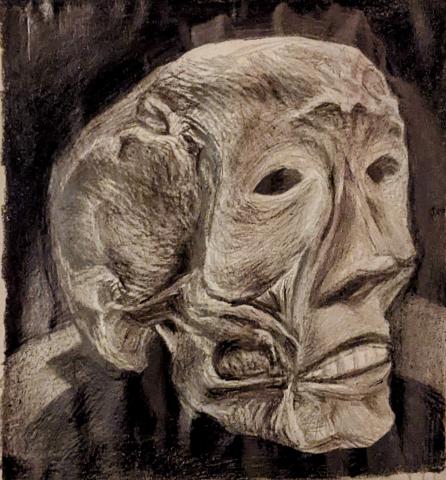The skull is a powerful and enduring symbol in art that carries various meanings and symbolism across different cultures and time periods. Here are some of the key symbolic meanings associated with a skull in art:
- Memento Mori: Latin for "Remember that you will die," this is one of the most common symbolic interpretations of a skull in art. It serves as a reminder of the impermanence of life and the inevitability of death. Artists often use skulls to encourage viewers to reflect on the transient nature of human existence and to prioritize what truly matters in life.
- Vanitas: In the genre of still life painting, particularly popular during the Renaissance and Baroque periods, skulls were often included as part of vanitas compositions. These paintings contained various symbolic objects, including skulls, to symbolize the fleeting nature of worldly pleasures, wealth, and beauty. They reminded viewers of the futility of material pursuits and the importance of spiritual or moral values.
- Resurrection and Rebirth: In some religious and artistic contexts, a skull can symbolize resurrection and rebirth. It can represent the idea that death is not the end but a transition to another state of being or an afterlife. This interpretation is particularly prevalent in Christian art, where the resurrection of Christ is a central theme.
- Mexican Day of the Dead (Dia de los Muertos): In Mexican culture, the skull, often depicted as a calavera, is a key symbol associated with the Dia de los Muertos (Day of the Dead) festival. During this celebration, people create elaborate sugar skulls and face paintings to honor and remember deceased loved ones. The skull here represents a joyful and colorful celebration of the lives of the departed rather than a somber reflection on death.
- Rebellion and Counter-Culture: In more modern and contemporary art, skulls have been embraced as symbols of rebellion, nonconformity, and counter-culture. They can represent a rejection of societal norms and a celebration of individuality, as seen in popular culture and street art.
- Protection and Warding Off Evil: In some cultures, skulls have been used as protective symbols. They are believed to ward off evil spirits and negative energies. This protective aspect of skulls can be seen in various forms of folk art and talismans.
- Transformation and Change: A skull can symbolize transformation, not just in the context of life to death but also as a representation of change and evolution. It can signify the shedding of the old to make way for the new, a theme often explored in contemporary art.
The symbolism of a skull in art can vary widely depending on the cultural, historical, and artistic context in which it is used. Ultimately, the interpretation of a skull in art can be deeply personal and subjective, inviting viewers to reflect on their own beliefs, experiences, and mortality.
Wikipedia link

